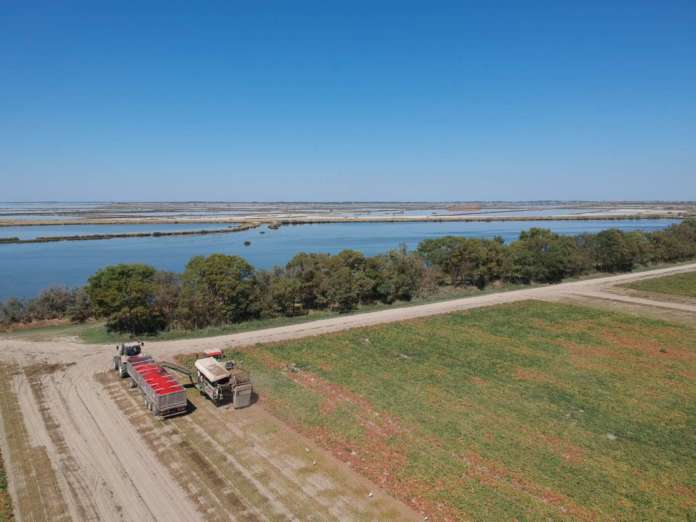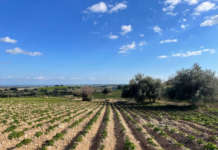L’agricoltura nei terreni sabbiosi del ferrarese è già una realtà consolidata da tempo e tra poco potrà diventare un vero e proprio distretto con un’ipotesi di marchio “ombrello”.
E’ quanto si propone Valoser, il progetto di valorizzazione del territorio delle sabbie del delta del Po emiliano. Un impegno collettivo che vede la collaborazione tra enti pubblici e privati, con l’obiettivo di promuovere la conservazione degli ecosistemi naturali e le attività economiche del territorio, in particolare il turismo, l’agricoltura e l’estrazione di materiali come la sabbia.
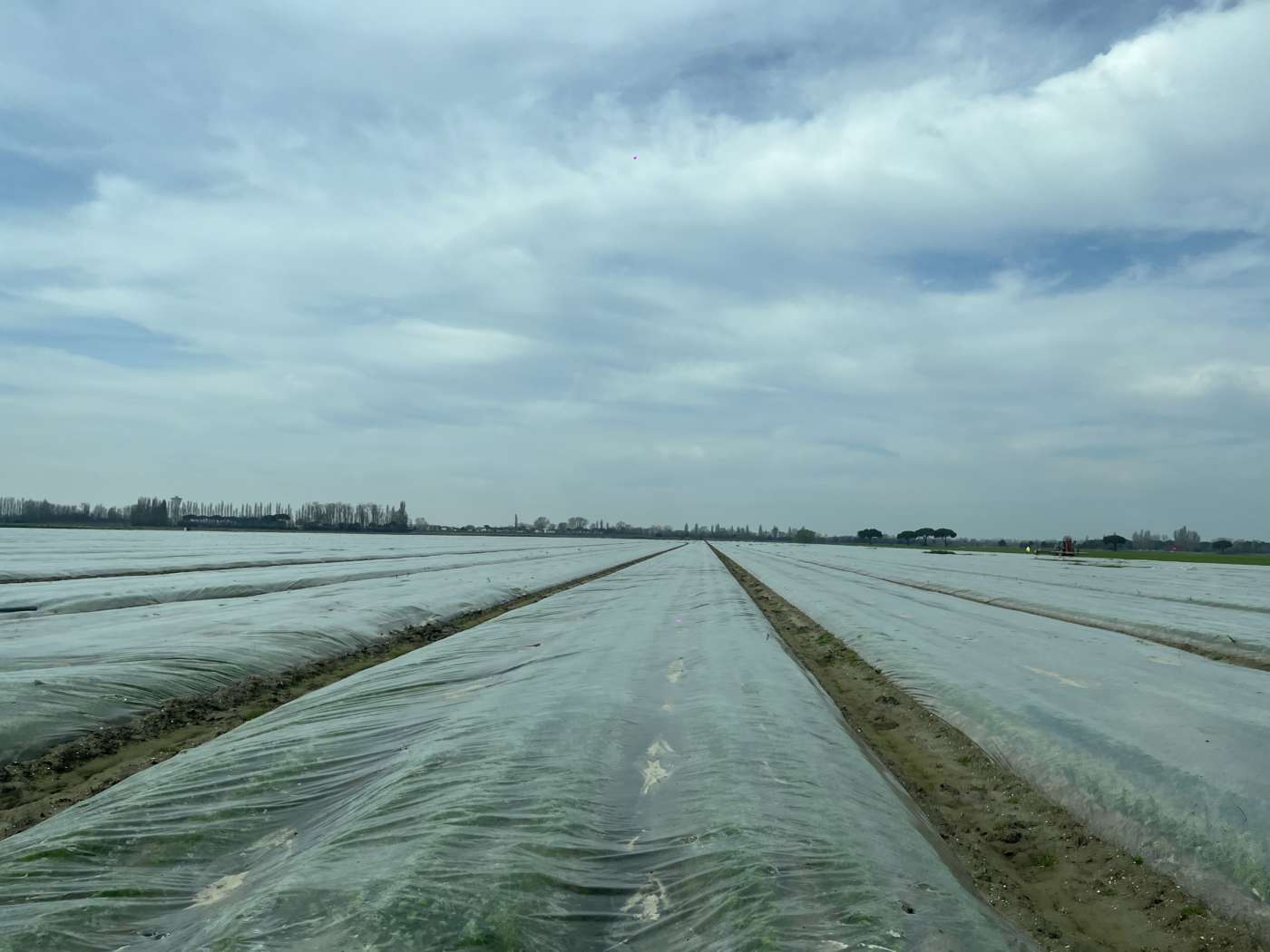 Le caratteristiche del suolo sabbioso
Le caratteristiche del suolo sabbioso
Il territorio del delta del Po emiliano presenta caratteristiche uniche in Italia. Fino agli anni Settanta, i terreni erano considerati di poco valore, tanto che furono oggetto di specifiche politiche di insediamento. Oggi, quei terreni, oltre ad aver incrementato il loro valore economico, possiedono un prezioso valore immateriale legato all’ambiente e al bene comune.
Qui però l’agricoltura, per chi la pratica ogni giorno, non è impresa facile in quanto, oltre a dover misurarsi con le tematiche legate alla tutela ambientale e alla sostenibilità (siamo all’interno di un parco protetto), deve fare i conti con terreni poco strutturati dal punto di vista organico (composti al 60% di sabbia) e con scarsa capacità di ritenzione idrica.
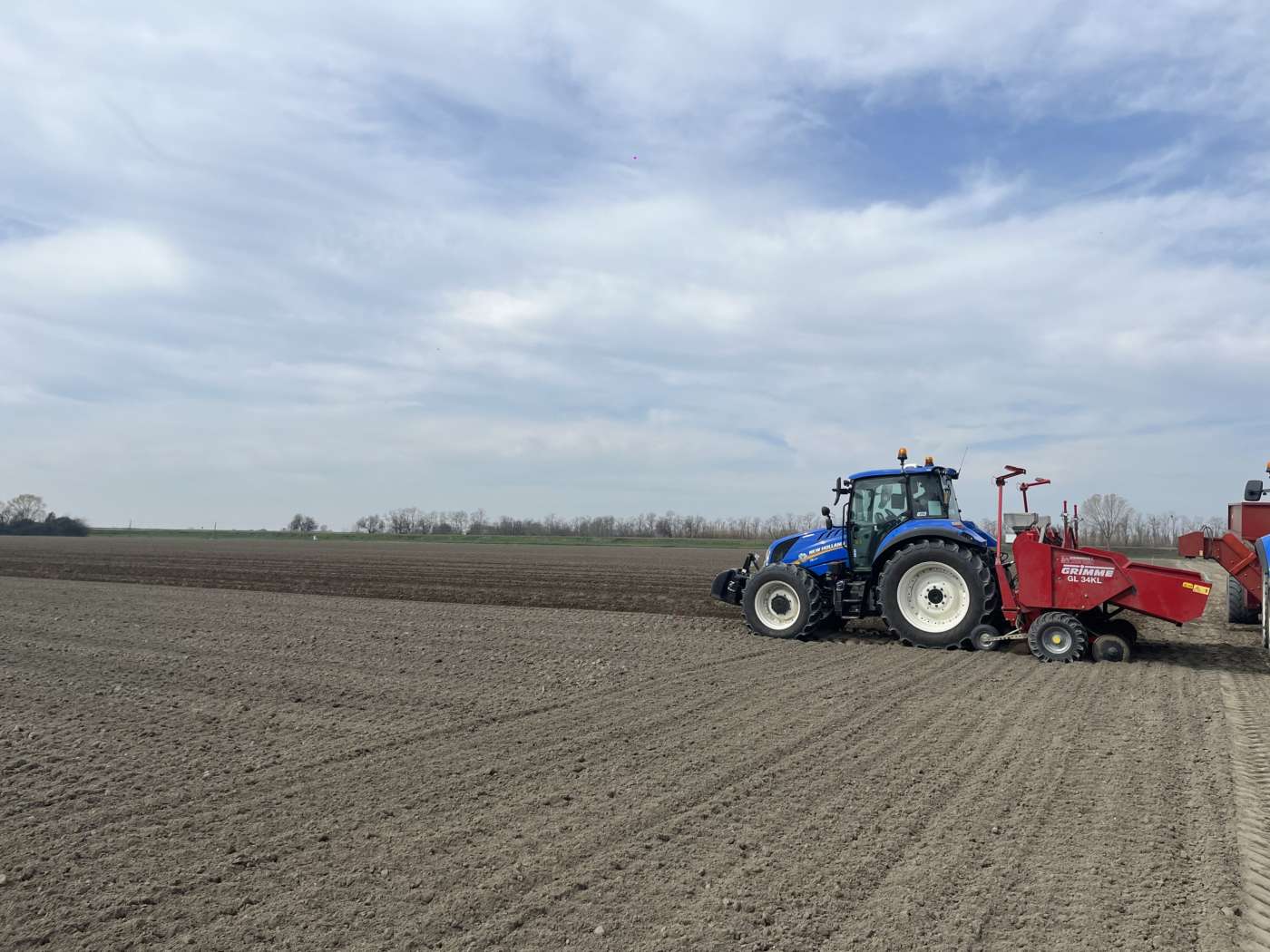 Se da un lato questi fattori legati alla composizione del suolo costituiscono un limite, dall’altro presentano dei vantaggi per la coltivazione dei terreni (buona mobilità dell’acqua, alta permeabilità) e caratteristiche intrinseche che permettono di accelerare il ciclo di alcune colture, in particolare la carota, qui disponibile per oltre 10 mesi l’anno.
Se da un lato questi fattori legati alla composizione del suolo costituiscono un limite, dall’altro presentano dei vantaggi per la coltivazione dei terreni (buona mobilità dell’acqua, alta permeabilità) e caratteristiche intrinseche che permettono di accelerare il ciclo di alcune colture, in particolare la carota, qui disponibile per oltre 10 mesi l’anno.
Oggi, però, quei terreni preziosi sono a rischio, minacciati da fenomeni di intrusione salina, subsidenza, perdita di sostanza organica che solo attraverso politiche collettive di sostenibilità possono essere gestiti.
Ecco, quindi, l’idea del distretto, supportato da un impianto normativo nazionale, come modello di gestione globale del territorio e delle sue problematiche.
Il distretto delle sabbie emiliane
I Distretti del Cibo, che ricordiamo sono costituisti in base a una legge nazionale, sono realtà strettamente legate al territorio con un’identità produttiva omogenea, come appunto quello proposto dal progetto pilota Valoser.
Il territorio considerato comprende geograficamente sei comuni (Mesola, Goro, Ostellato, Codigoro, Comacchio, Lagosanto) tutti siti nella provincia di Ferrara, per una superficie lorda destinata ad attività agricole pari a 18.598 ettari totali.
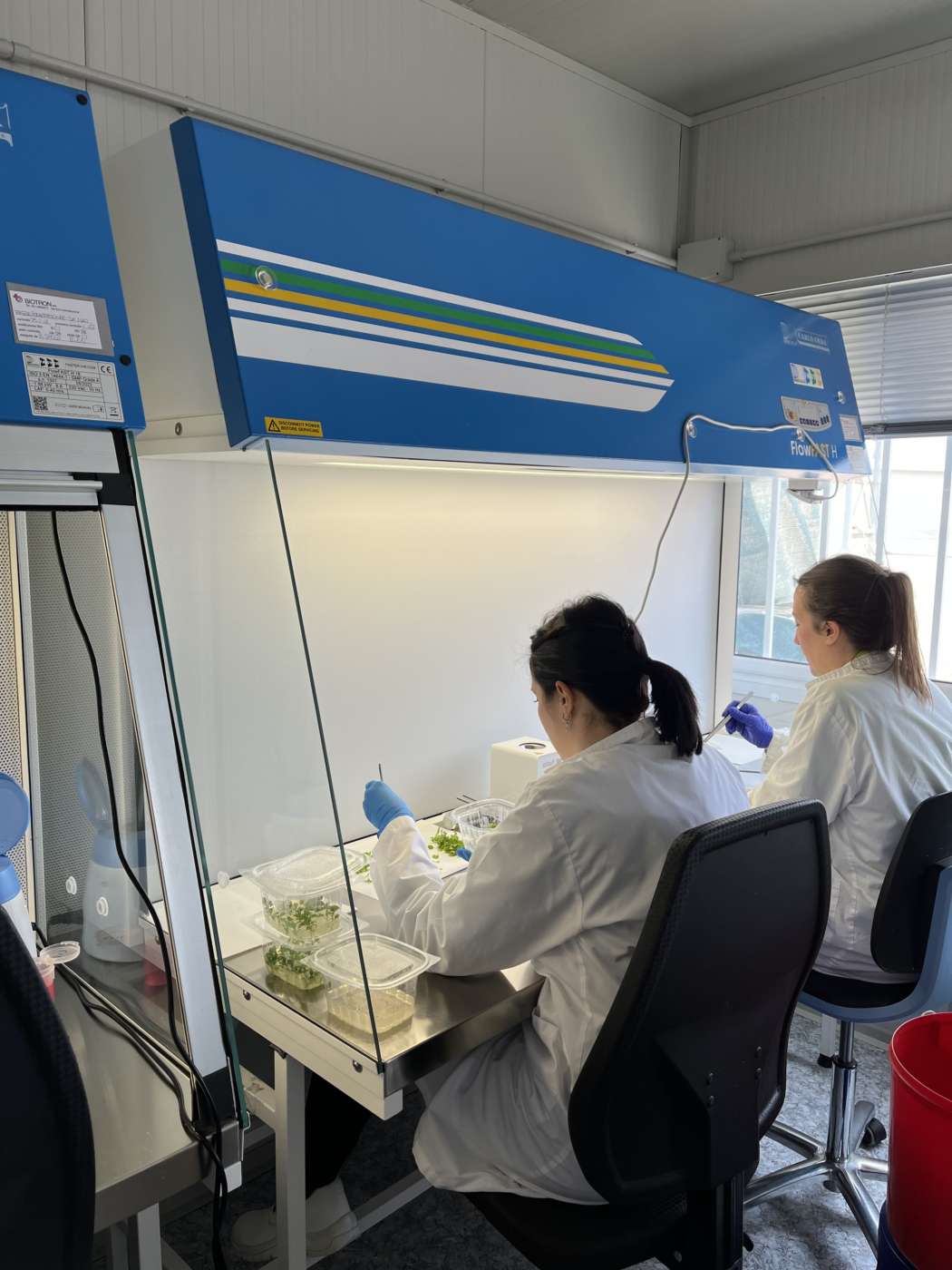 Le ragioni che inducono il soggetto richiedente (e tutte le aziende aderenti) alla costituzione del Distretto delle Sabbie Emiliane e quindi al riconoscimento come Distretto del Cibo sono legate, in primis, alla conservazione e al mantenimento della fertilità di questi suoli. Un obiettivo che porta anche ad una rivalutazione individuale del patrimonio economico catastale delle aziende aderenti, come ha dichiarato Gualtiero Mazzoni.
Le ragioni che inducono il soggetto richiedente (e tutte le aziende aderenti) alla costituzione del Distretto delle Sabbie Emiliane e quindi al riconoscimento come Distretto del Cibo sono legate, in primis, alla conservazione e al mantenimento della fertilità di questi suoli. Un obiettivo che porta anche ad una rivalutazione individuale del patrimonio economico catastale delle aziende aderenti, come ha dichiarato Gualtiero Mazzoni.
Il paniere del territorio e le aziende
Secondo i dati della Regione Emilia-Romagna riferiti al 2020, nei sei comuni considerati dal progetto pilota, sono stati prodotti 7.024 ettari di grano tenero, 4.018 ettari di pomodoro, 2.324 ettari di grano duro, 1.185 ettari di patate e 1.145 ettari di carote.
A queste produzione va aggiunta la parte riguardante i vivai frutticoli (152 ettari), ortive a pieno campo (32 ettari), fragole in pieno campo (175 ettari).
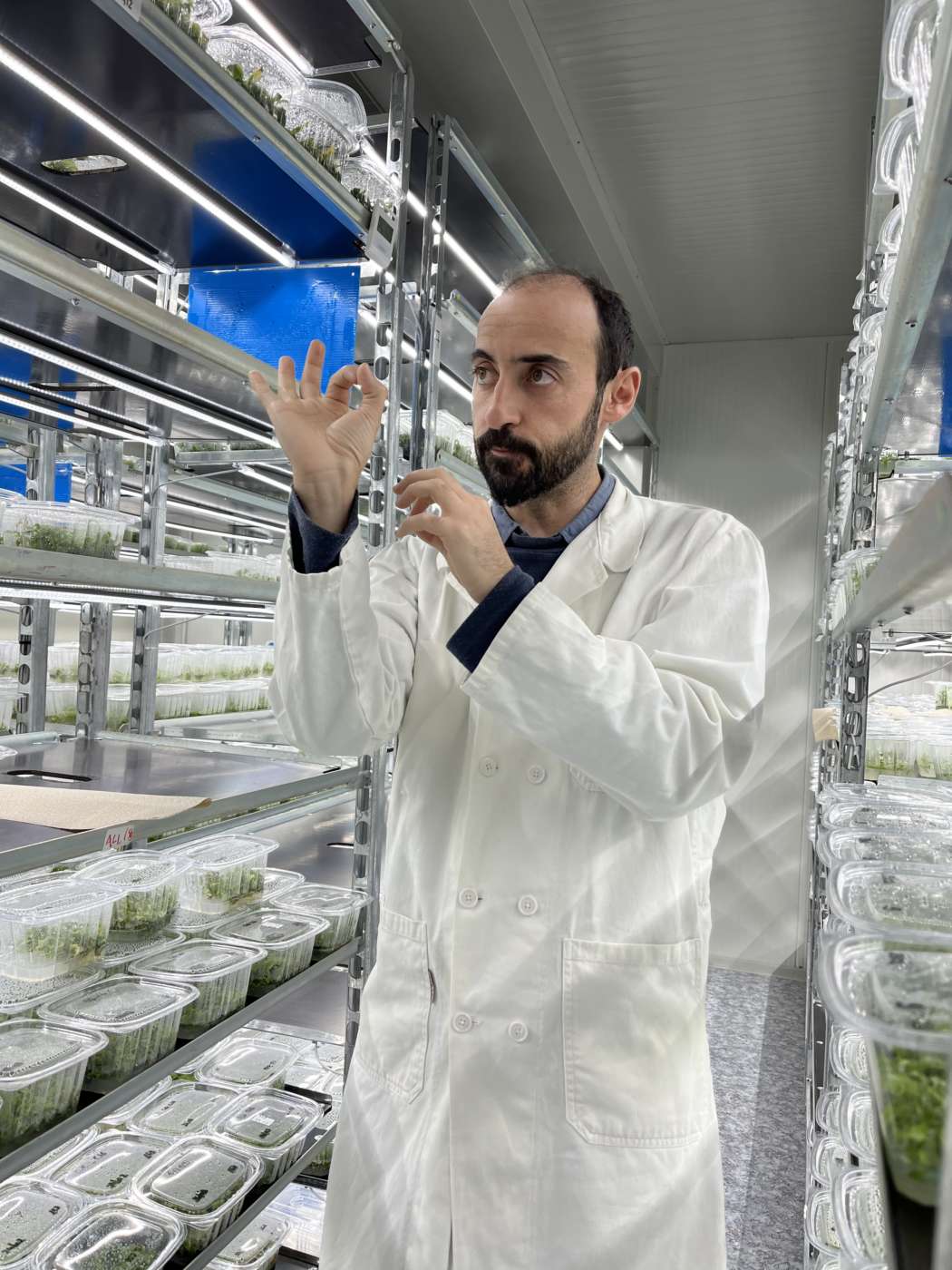 In questo particolare areale sono concentrate aziende di importanza internazionale, in particolare, nel settore vivaistico. Qui, infatti, nasce il 90% delle piantine di fragole che si producono ogni anno in Italia e, sempre in questo territorio privilegiato, si fa ricorso alle tecnologie più avanzate per la propagazione dei portainnesti. Nel laboratorio di micropropagazione dei Vivai Salvi si sta lavorando al kiwi giallo (Bounty) e al ciliegio (Gisela 5 e Gisela 6) e tra aprile e luglio dalle serre partono oltre 145 mila piante innestate.
In questo particolare areale sono concentrate aziende di importanza internazionale, in particolare, nel settore vivaistico. Qui, infatti, nasce il 90% delle piantine di fragole che si producono ogni anno in Italia e, sempre in questo territorio privilegiato, si fa ricorso alle tecnologie più avanzate per la propagazione dei portainnesti. Nel laboratorio di micropropagazione dei Vivai Salvi si sta lavorando al kiwi giallo (Bounty) e al ciliegio (Gisela 5 e Gisela 6) e tra aprile e luglio dalle serre partono oltre 145 mila piante innestate.
Chi aderisce al progetto Valoser
L’iniziativa Valoser, partita con uno studio di fattibilità tre anni fa, vede tra i protagonisti, oltre alla Regione Emilia-Romagna, aziende di importanza internazionale come Vivai Mazzoni e Salvi, Società Agricola Oasi di Garbin Antonio e C., Società Agricola Delta Bio, Marta Mazzoni, Consorzio Italiano Cooperative Ortofrutticole C.I.C.O., Maiscoltori Basso Ferrarese Società Cooperativa Agricola, Pro.Pa.R. Società Cooperativa Agricolare, Cnr Ibe, Dinamica, con il contributo di Istituto Delta Ecologia Applicata.
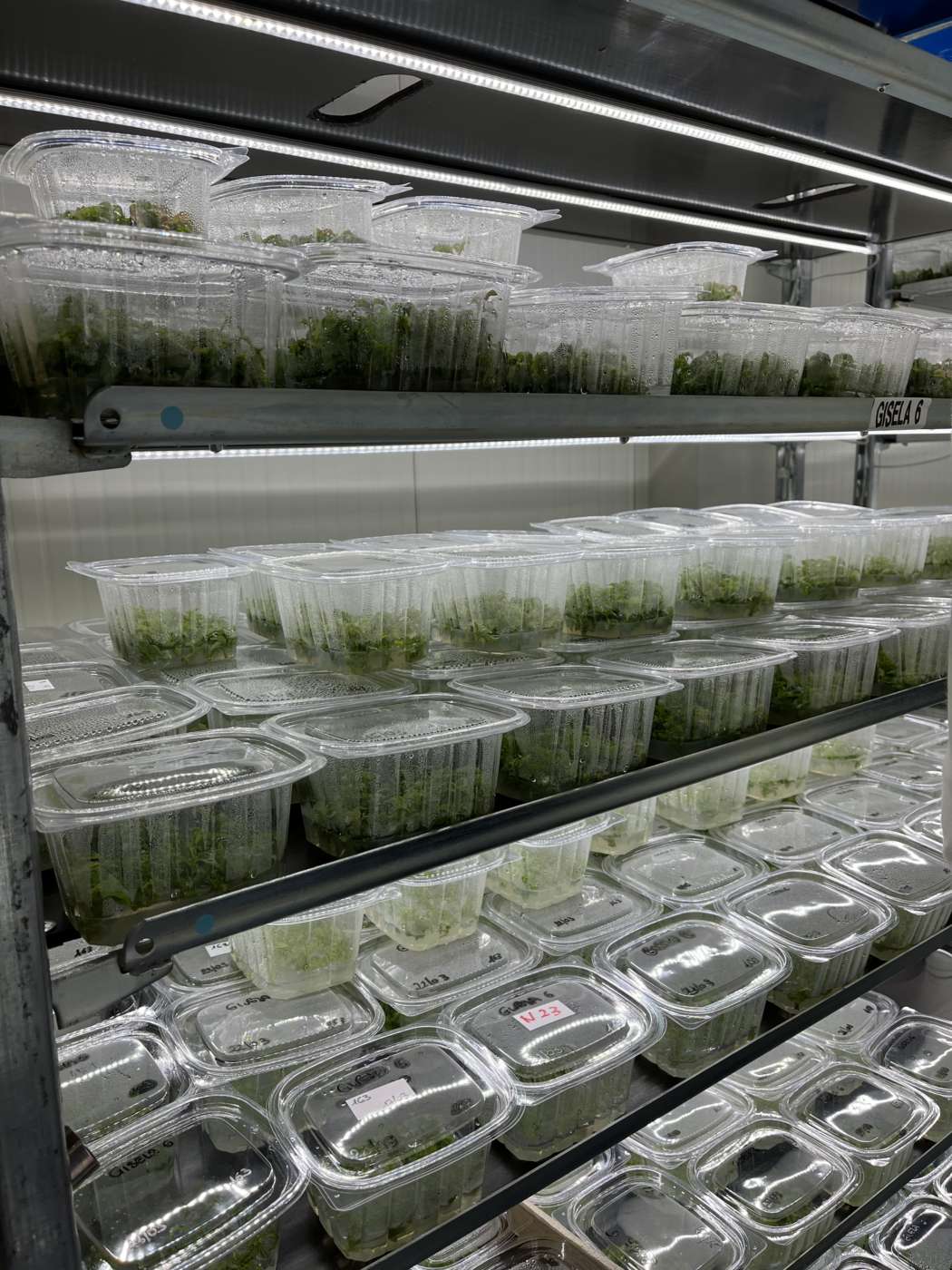 Con l’adesione al distretto le aziende si impegnano ad ottenere (e mantenere) certificazioni importanti a livello nazionale ed internazionale che testimoniano il loro costante lavoro verso una metodologia di agricoltura orientata allo sviluppo sostenibile del territorio e delle sabbie emiliane.
Con l’adesione al distretto le aziende si impegnano ad ottenere (e mantenere) certificazioni importanti a livello nazionale ed internazionale che testimoniano il loro costante lavoro verso una metodologia di agricoltura orientata allo sviluppo sostenibile del territorio e delle sabbie emiliane.
I tempi per arrivare alla costituzione del distretto
Secondo quanto dichiarato dalle aziende aderenti al progetto, l’obiettivo è di arrivare alla costituzione del distretto in tempi brevi.
Ora, dopo la chiusura dello studio di fattibilità, la sfida passa alle aziende che devono implementare politiche di aggregazione atte ad arrivare a questo obiettivo.
“L’unione tra gli agricoltori sarà fondamentale per la riuscita del distretto -commenta Michele Gerin– direttore società agricole Mazzon di Voghiera (Fe). A giudicare dall’interesse e dalle aziende presenti alla presentazione del Progetto Valoser i tempi sono maturi e il distretto non tarderà ad arrivare”.
—-
WITH VALOSER PROJECT, THE DISTRICT FOR THE ENHANCEMENT OF THE SAND TERRITORY OF PO DELTA TAKES SHAPE
The products grown in this area are strawberries, but above all horticultural crops, such as potatoes, tomatoes, and carrots
Agriculture in the sandy soils of Ferrara area has already been a consolidated reality for some time and will soon become a real district with an hypothesis of ‘umbrella’ brand.
This is proposed by Valoser, the project to enhance the sand territory of the Emilian Po Delta. We are talking about a collective commitment that sees the collaboration between public and private bodies, with the aim of promoting the conservation of both natural ecosystems and economic activities of the area, in particular tourism, agriculture, and the extraction of such materials as sand.
The territory of the Emilian Po Delta has unique characteristics in Italy. Until the 1970s, these lands were considered of little value, so much so that they were the subject of specific settlement policies. Today, those lands, in addition to having increased their economic value, possess a precious intangible value linked to the environment and the common good.
Here, however, agriculture, for those who practice it every day, is not an easy task, as in addition to having to deal with issues related to environmental protection and sustainability (we are inside a protected park), it must deal with poorly structured soils from an organic point of view (they contain about 60% of sand) and with low water retention capacity.
If on the one hand these factors linked to the composition of the soil constitute a limit, on the other hand they present advantages for the cultivation of the land (good water mobility, high permeability) and intrinsic characteristics which allow accelerating the cycle of some crops, in particular carrot, available here for over 10 months a year.
Today, however, those precious lands are at risk, threatened by saline intrusion, subsidence, loss of organic matter that can only be managed through collective sustainability policies.
Here the idea of the district was born. It is supported by a national regulatory system, as a model of global management of the territory and its problems.
The Food Districts, which, as we recall, are established on the basis of a national law, are realities closely linked to the territory, with homogeneous production identity, such as the one proposed by Valoser pilot project.
The considered territory geographically includes six municipalities (Mesola, Goro, Ostellato, Codigoro, Comacchio, and Lagosanto), all located in the province of Ferrara, for a gross area destined to agricultural activities equal to 18,598 total hectares.
The reasons that induce the requesting party (and all the companies participating in the project) to establish the Emilian Sands District and therefore to be recognized as a Food District are linked, first of all, to the conservation and maintenance of the fertility of these soils. This objective also leads to an individual revaluation of the cadastral economic assets of the member companies, as stated by Gualtiero Mazzoni.
According to the data of Emilia Romagna Region referring to 2020, in the six municipalities considered by the pilot project, 7,024 hectares of soft wheat, 4,018 hectares of tomatoes, 2,324 hectares of durum wheat, 1,185 hectares of potatoes, and 1,145 hectares of carrots were produced.
To these productions the part concerning fruit nurseries (152 hectares), open field vegetables (32 hectares), and strawberries in open fields (175 hectares) must be added.
In this particular area, companies of international importance are concentrated, in particular in the nursery sector. Here, in fact, 90% of the strawberry plants that are produced every year in Italy are born, and, again in this privileged territory, the most advanced technologies are used for the propagation of rootstocks. In the micropropagation laboratory of Vivai Salvi, works are in progress on yellow kiwi (Bounty) and cherry (Gisela 5 and Gisela 6), and between April and July over 145,000 grafted plants leave the greenhouses.
BOX1
COMPANIES THAT JOIN THE PROJECT
The initiative, which started with a feasibility study three years ago, sees among the protagonists, in addition to Emilia Romagna Region, such companies of international importance as Vivai Mazzoni e Salvi, Società Agricola Oasi di Garbin Antonio e C., Società Agricola Delta Bio, Marta Mazzoni, ‘Consorzio Italiano Cooperative Ortofrutticole C.I.C.O.’ Consortium, ‘Maiscoltori Basso Ferrarese Società Cooperativa Agricola’ Cooperative Society, Pro.Pa.R. Società Cooperativa Agricolare, Cnr Ibe, Dinamica, with the contribution of the Institute Applied Ecology Delta.
By joining the district, the companies undertake to obtain (and maintain) important certifications at national and international level, which testify to their constant work towards an agricultural methodology oriented to the sustainable development of the Emilian territory and sands.
BOX2
TIME TO ARRIVE TO THE CONSTITUTION OF THE DISTRICT
According to what was declared by the companies participating in the project, the goal is to arrive at the constitution of the district in a short time.
Now, after the conclusion of the feasibility study, the challenge passes to the companies that must implement aggregation policies aimed at achieving this goal.
Michele Gerin, director of Mazzoni agricultural company at Voghiera (Ferrara), commented: ‘The union between farmers will be fundamental for the success of the district’.
Judging by both interest and companies present at the presentation of Valoser Project, the time is ripe and the district will not be long in coming.

